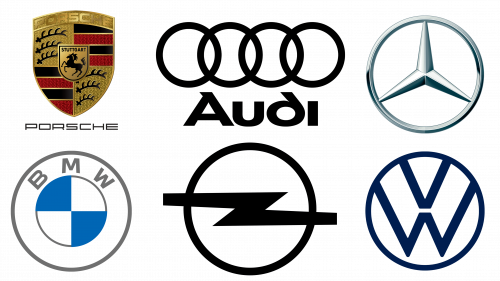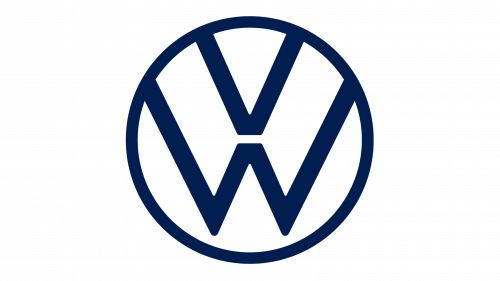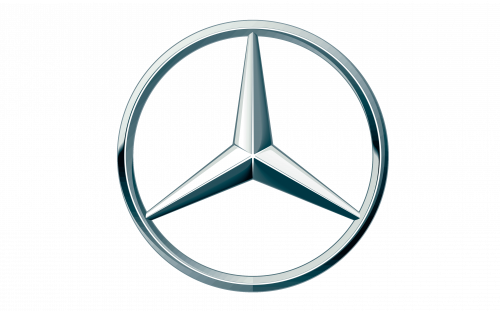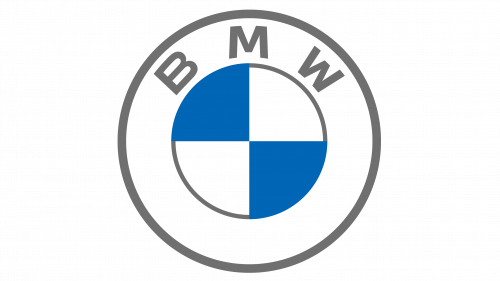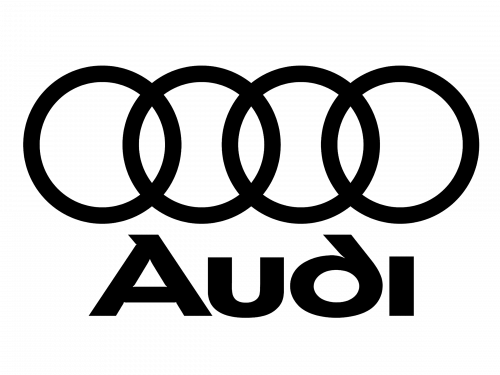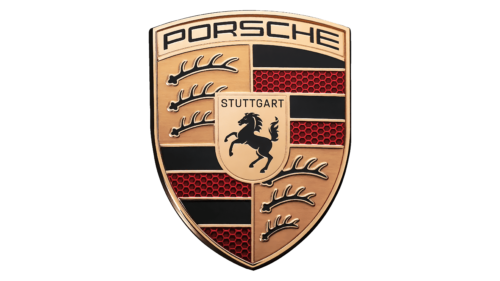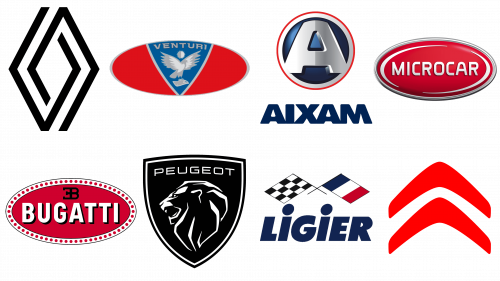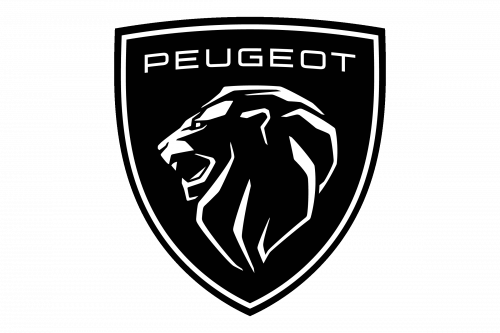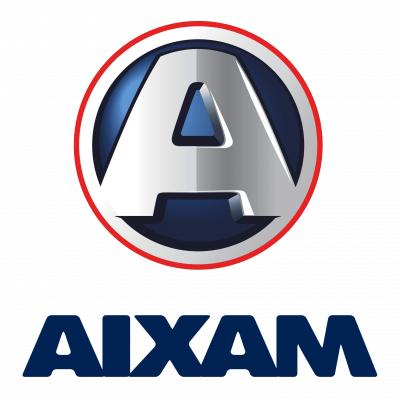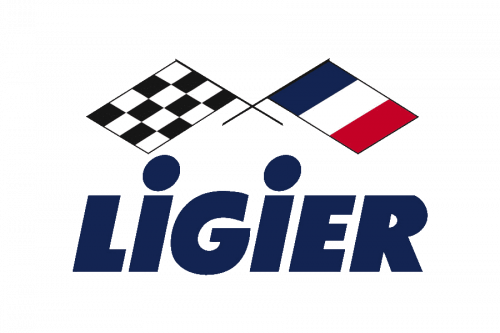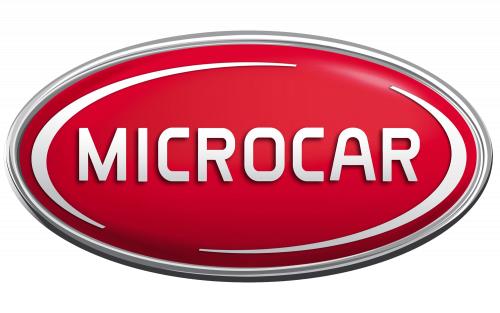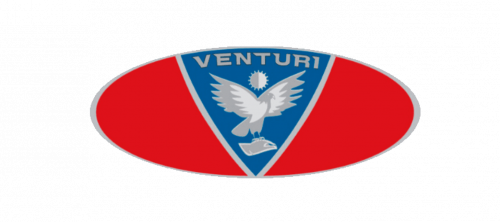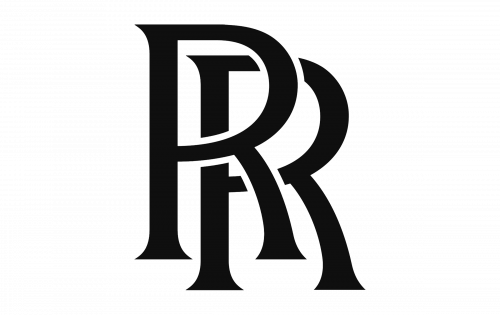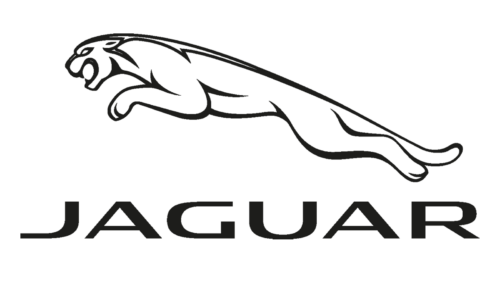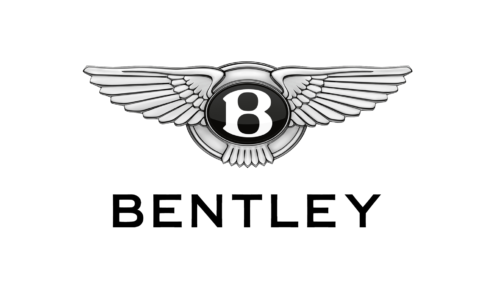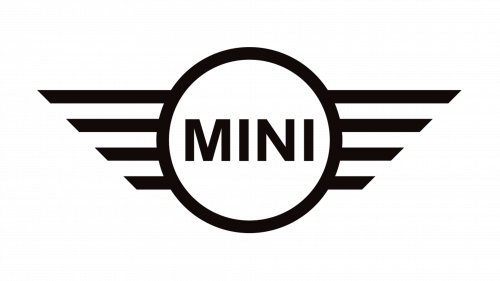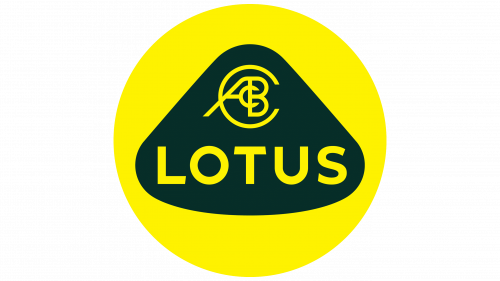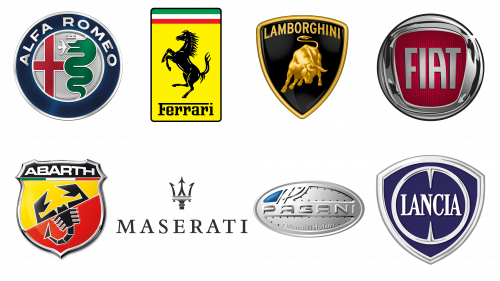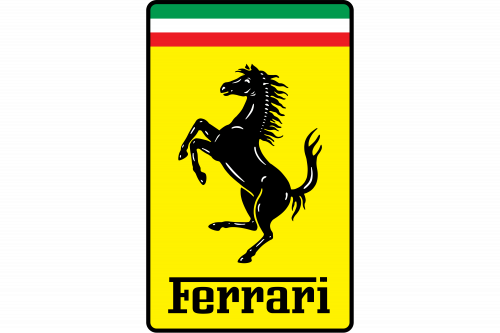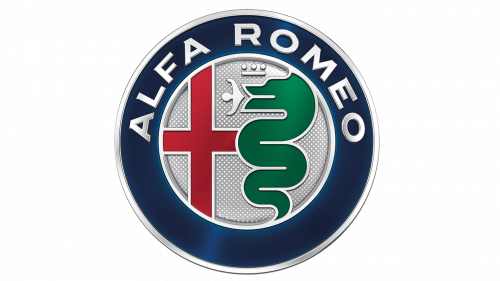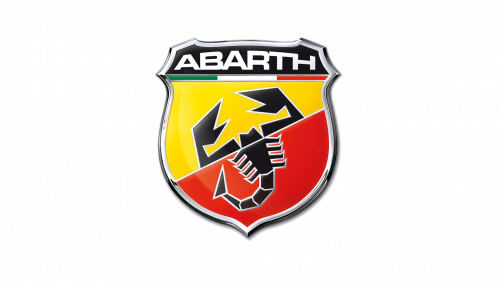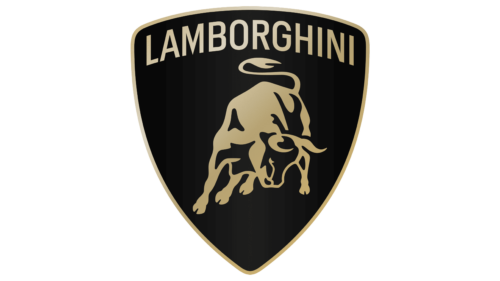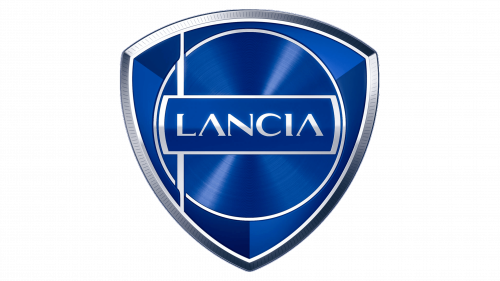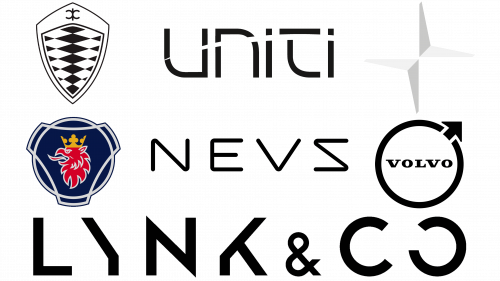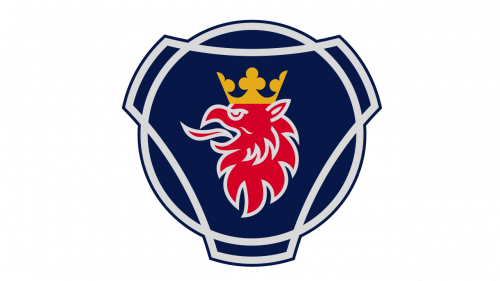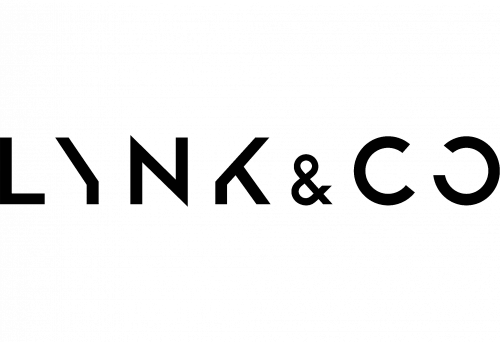Europe is not only the world leader but also the progenitor of the automobile industry. The combustion engine vehicles we are familiar with appeared in 1886. The first gasoline-powered car in the world was created by Karl Benz, the founder of one of the most luxurious German brands, Mercedes-Benz.
Since then, Europe has given the world a huge number of car companies, from manufacturers of expensive sports cars to automakers focused on the budget-cars segment. Unfortunately, many historical brands no longer exist today, but their masterpieces can still be found in the collections of car enthusiasts around the world. In our today’s article, we will talk about the main current European car brands and their logos.
European car brands are some of the most luxurious and expensive cars on the market today. Despite the presence of competing automobile giants in the United States and Asia, European car brands have maintained their high standing, becoming a vital part of the global automotive heritage. They are the epitome of beauty, impressive performance, and long tradition.
Today, vehicles produced in Europe are among the most sought-after. At the same time, the market is monopolized – a large part both internal and external is occupied by the major companies. However, in recent years, we have all generally seen well-known European car manufacturers being acquired by American and Asian companies.
Germany
As mentioned above, Germany is the country where it all started. More than a century has passed since the creation of the first car, and Germany is still the world leader in auto manufacturing. Modern German car manufacturers are among the top 5 countries with the most popular cars in the world. Cars of these brands are known first of all for their highest quality, but in terms of design, it is very difficult to pick on anything. German car brands annually produce about 6 million pieces of new cars, which are among the most innovative cars in the world. German automakers are most often associated with luxurious high-end cars, but some of the brands are still oriented toward business and economy class vehicles.
Opel (1862 – Today)
The company Adam Opel AG was founded in 1863, and the first cars under the Opel brand appeared as early as 1899, just a couple of years after the life-changing invention of Karl Benz. For the first 30 years, the German company was engaged in the manufacture of bicycles and became the first manufacturer of bicycles in the world. So being the industry leader is in Opel’s blood, and today we can see how the company’s budget cars are popular in different parts of the world, and the sharp and concise logo in the shape of a circle inscribed with a “Z” has become one of the most recognizable car emblems in the world.
Volkswagen (1937 – Today)
Volkswagen was founded in 1937 by Ferdinand Porsche, the same man who, six years earlier, had founded one of the most luxury auto brands in the world. Volkswagen was created “for the people”, that is, initially aimed at the middle class and budget cars. According to statistics, it has been established that one in 50 residents of Germany has a Volkswagen car in their possession. This is an excellent proof that the idea was a success. These days, Volkswagen remains a model of success throughout the global automotive market. Its logo with two letters “VW” set vertically inside the circular frame never changed its concept but was only becoming more modern and strong throughout the years, just like the company itself.
Mercedes-Benz (1926 – Today)
Mercedes-Benz is not a brand, it’s the legend. Founded in 1926 by the man who invented the automobile, the company remains a world leader in the industry to this day. From the very beginning, Mercedes has been bringing innovative cars to the car market, which combine both style and technology. Over time, the company has expanded its lineup to include not only expensive luxury sedans, but also trucks, buses, and vans. The Mercedes-Benz cars today do not need an introduction, this is why the current brand’s logo is the most minimalistic of all, ever created for it. The plain gray iconic three-pointed star is inscribed into a circle and complemented by the simple gray logotype. Although on the bonnets of the luxury cars the star is still voluminous and glossy.
BMW (1916 – Today)
BMW is another legendary brand in the German automotive industry. Success came to this company thanks to the production of aircraft engines produced by Bayerische Flugzeug-Werke, founded in 1916. Later the company began to engage in the production of car engines. The first car under the brand BMW saw the light in 1929. Since then, the company is one of the leaders in the production of serial cars with a sporty character, and a blue-white logo, reminiscent of the aviation past of the company and its Bavarian roots, which are now known throughout the world. The latest version of the logo looks very modest and minimalistic – without gradients and volumetric elements, very much in the spirit of the times.
Audi (1909 – Today)
Audi was founded in 1909 in Bavaria and is one of the German automakers with the greatest influence on the automobile industry in the country. In 1932, this company merged with three other automakers: Horch, DKW, and Wanderer, forming the Auto Union group of companies. It is this event that explains the whole meaning of the four intertwined rings on the modern Audi logo. The current logo of the iconic German automaker is slightly different from all the previous versions, as it’s super minimalistic and laconic: grout flat rings in plain black color on transparent background with no additional lettering. As for the actual emblem, placed on the bonnets of Audi cars, it still looks the same — glossy silver rings, which vary in size depending on the car model.
Porsche (1931 – Today)
Founded in 1931 by Ferdinand Porsche, who would later create Volkswagen, Porsche is one of the largest and most famous car manufacturers in Germany. It is no secret that Porsche is all about luxury. Essentially, this brand specializes in the creation of powerful sports cars, hypercars, supercars, and luxury SUVs. The iconic Porsche logo hasn’t changed much since it first saw the light in the 1920s. The ornate heraldic crest of the high-end German automaker is all about its tribute to its roots and history. The emblem is composed of the Wurttemberg seal and the Stuttgart’s coat of arms, representing the motherland of the company. As for the horse, the most recognizable element of the elegant badge, it represents the horse farm, where the city was born.
France
France rightfully takes its place among the world’s leading car manufacturers. According to numerous surveys and studies, French cars are the most popular in the European market, and about two-thirds of their cars are operated in Europe, but the share of exports is growing every year. Citroen, Peugeot, and Renault are the three largest car manufacturers in France, but these are by no means all the brands that this European country can boast of. Back at the very beginning of the last century, Bugatti appeared on the world stage, which to this day produces some of the most expensive cars in the world.
Peugeot (1896 – Today)
Peugeot is the oldest car brand in the world, founded in 1803 by Jean-Pierre and Jean-Frédéric Peugeot. It began as a family grain mill and became one of the most popular European brands of affordable cars. The company’s first car saw the light already in the late 1880s, and since then Peugeot does not cease to delight us with technological innovations and stylish design. The updated logo of the French car brand looks very laconic and modern, although it retains the recognizable lion rampant as its main character. The inscription on the logo has also become more minimalistic and contemporary, with cleaner lines and wider contours of the letters.
Renault (1899 – Today)
The history of the famous French car manufacturer began in 1899. The company was founded by the Renault brothers to create inexpensive and compact cars, and by and large, the concept of the brand has not changed much since then. Renault is a brand, known all over the world for its budget cars. As for compactness, there are quite a few “big” models in the brand’s lineup today. The prototype of the modern Renault logo was introduced in the mid-1920s, and for almost a century since its creation has undergone many changes. Today the emblem of the brand is a perfect diamond-shaped hexagon with a small “diamond” in the middle, executed in straight black lines over a transparent background.
Citroen (1919 – Today)
This large French automobile company was founded in 1919 by André Gustave Citroen. Initially, the factory, owned by the industrialist, produced munitions for the front, but after the First World War, it was refocused on the production of cars. Since then, Citroen has been one of Europe’s leaders in the production of mid-range cars. Unlike many other car brands, Citroen uses its technological advances as the main element of its logo. The Citroen emblem is a reference to the chevron gear, invented by André Citroen in 1900. Today it is two elegant, slightly pointed arches positioned one above the other and executed in a very light shade of gray with white accents. The lettering is set in the same shade of gray with wide shapes and distinctive contours.
Bugatti (1909 – Today)
The history of this chic French brand began in 1900, when Ettore Bugatti, a talented engineer, and a passionate racing fan, created the first car – the Type 2 model. Today, it is impossible to imagine not only the French car industry but also the global segment of luxury cars without Bugatti. Ettore Bugatti designed the emblem of the brand, and since then the iconic logo has not changed too much. The Bugatti logo is a horizontally stretched oval in bright red with the company name and the elegant monogram “EB” on top. The badge is enclosed in a frame composed of 60 solid dots.
Aixam (1984 – Today)
Aixam is not the most famous French car brand, but it is the most “miniature”. The name of the company, established in 1983, comes from the name of the city where the plant of the brand is located, Aix-les-Bains, Savoie. Today Aixam produces mini cars, which in some countries are even classified as ATVs. Cars with the Aixam logo can be seen in almost every European country. It is an exaggeratedly bold letter “A” inscribed into a circular frame and accompanied by a bold and smooth logotype. The logo is executed in a very patriotic for France color palette — blue, white, and red, where red is only used for the thin framing, and white is replaced by gradient silver.
Ligier (1971 – Today)
Ligier is another hidden gem of the French automaking industry. The company was founded by the famous auto racer Guy Ligier, who put all his knowledge and experience into the production of high-quality racing cars. Today the car company founded by Guy Ligier is not only a racing car manufacturer with an excellent reputation but also a major specialist in microcars. It produces them both under the Ligier brand and Microcar. The Ligier logo is a tribute to the creator of the brand. Two crossed flags (a black and white checkered racing flag and the flag of France), and the uppercase inscription in a heavy sans-serif typeface with its slightly slanted letters drawn in deep blue color.
Microcar (1980 – Today)
The younger sister of the racing car brand Ligier was established in the 1980s and initially specialized in the production of microcars used by boat owners, as the main company of the brand was Beneteau, the French manufacturer of boats. In 2000 the marque was acquired by Ligier, but kept its “micro-focus”. The Microcar logotype is very bright and smooth, reminding sugar candies, just like the small colorful cars of the brand. The horizontally oriented oval emblem is executed in glossy red and accompanied by two silver orbits framing the uppercase lettering in a modern sans-serif font with some of the angles softened.
Venturi (1984 – Today)
Venturi is a luxury car brand created in France in the mid-1980s and known for its models based on Porsche and Ferrari cars. It is definitely not the most famous French car brand, but it is one of the most unusual and unique. The cars of the brand look very cute and “bubbly”, but their technical characteristics are no joke. The Venturi logo is bright and very sophisticated. The horizontally oriented oval badge is set in scarlet red and has its central part talent by a solid blue triangular pointing down. The framing of the triangular is set in light gray, and the same shade the main element of the badge is drawn — the bird with its wings spread wide, a stylized sun, and the Venturi logotype in a custom elegant typeface on top.
United Kingdom
The car industry in England is one of the largest industries, with around two million cars being produced each year. Of course, the first brands that come to mind are sports cars and luxury Rolls-Royce and Bentley, but in England, there are many other brands engaged in small-scale production, which are known mainly only within their country. And yet, the list of the most popular brands in the English car industry consists almost entirely of luxury brands. English premium cars have a refined and sophisticated style, which has a long and well-established tradition. Most British car brands have been on the market since the first half of the last century, which is why conservative design and technical innovation have long been hallmarks of the British car industry.
Rolls-Royce (1906 – Today)
One of the oldest car companies in England, Rolls-Royce was founded in 1904, and 1998 it was bought by the German car giant BMW. Rolls-Royce specializes in the production of engines for airplanes and, of course, legendary cars with unique interior trim. The brand cars are some of the most expensive in the world both in price and in operation. The Rolls-Royce logo is synonymous with the sign of luxury and excellence. Even though today the badge of the brand looks as minimalistic as never before — a flat black monogram on a transparent background — the lines and contours of the letters are complete perfection.
Land Rover (1948 – Today)
In 1948, Maurice and Spencer Wilkes founded the company for the production of Land Rover SUVs, and today the company’s lineup includes a variety of SUVs and crossovers, from the powerful and brutal Range Rover to the sporty and elegant Evoque. Since 2008, the British brand has been owned by India’s Tata Motors and is part of the Jaguar Land Rover Group. The logo of the SUV manufacturer has not changed much during the history of the company and is still a horizontally arranged oval of green color with the name of the brand written on two levels. The uppercase inscription in a custom typeface with some sharp elements is executed in a light and smooth crème shade.
Jaguar (1922 – Today)
Jaguar is another jewel in the crown of the British automotive industry. The company, founded in 1945 and known for its elegant luxury sedans, has recently begun to produce SUVs. Just like Land Rover, since 2008 Jaguar is owned by Tata Motors and is part of the Jaguar Land Rover Group. The iconic logo of the automaker hasn’t changed much since its creation — today it is still a leaping wild cat, but executed in a more modern and minimalistic manner, with more matte than glossy silver. As for the lettering part of the Jaguar visual identity, it is set in all capitals of a wide and bold sans-serif typeface with all-caps set in silver-gray gradients.
Bentley (1919 – Today)
Bentley is the British automaking brand, established in 1919 and synonymous with chic. Today the company, named after its founder, Walter Bentley is owned by the German Volkswagen Group. Bentley is known worldwide as the manufacturer of sleek and luxury sedans, and recently the company has introduced its first SUV. The Bentley logotype is sophisticated and powerful: a plain black circular medallion with a bold white “B” on it and two bird wings spread to the sides. To balance the smooth and ornate lines of the graphical part, the brand uses a strict and straight sans-serif typeface for its uppercase logotype.
Aston Martin (1913 – Today)
Aston Martin is another example of the luxury segment of the British car industry. The company’s name comes from the name of Aston-Clinton Hill, where one of the brand’s founders, Lionel Martin, won the Singer-10 in 1913. The cars of this brand, which are assembled by hand, are known for their unsurpassed technical performance and stylish sophisticated design. Until recently, the company has always used dark green color in its logo, but after the last redesign, the emblem of Aston Martin became black and white. Although in terms of composition it is still a rectangle with the name of the brand located at the top of the two connected wings.
MINI (1959 – Today)
MINI is a brand of car unlike any other. These compact cars in retro style can be seen in every country of the world because few can resist their unique design and interesting color solutions. Today the brand, established in the United Kingdom is owned by the German BMW Group. Despite the bright colors of MINI cars, the visual identity of the brand uses a very strict black and white palette. The current MINI badge is composed of a plain black inscription in a strict sans-serif typeface, enclosed into a black circular frame, decorated by four horizontal lines on each side. The lines have different lengths, which makes the white composition look like two geometric wings.
Lotus (1952 – Today)
Lotus is a famous British brand specializing in the manufacture of racing cars. The models, produced under the Lotus label, are considered to be one of the best in the world in their segment. The company was established at the beginning of the 1950s by Colin Bruce Chapman, and the name of the founder is forever engraved on the brand’s bright yellow-green logo. You can see his initials in the yellow monogram on top of the dark green triangle, right above the bold yellow “Lotus” inscription in a modern sans-serif typeface with diagonal cuts of the “T”s horizontal bar. The triangle with rounded angles is placed on a solid yellow circle.
McLaren (1985 – Today)
McLaren is another brand of a racing car from Great Britain, which was also named after its founder, Bruce McLaren. The name of this brand is known not only to motorists around the world but also to fans of Formula 1, as the company has its own racing team, successfully performing in competitions. The McLaren logo hasn’t changed much in the past decades and is still composed of bold black lettering followed by an abstract red element on the top right corner of the composition. The element looks like a thick swoosh, moving upright, and having its edge in gradients from red to black.
Vauxhall (1903 – Today)
Vauxhall is a British brand with impressive geography, as at some point it was owned by the German Opel Group, and today it is a part of the American General Motors Corporation. The brand is known for the production of vehicles in a medium-priced segment, which is mainly sold in the United Kingdom and Australia. In terms of visual identity, Vauxhall stands out in the list of its competitors with its bright red badge where a solid silhouette of a griffin is enclosed into a thick circular frame with the small flag coming from it to the inside of the composition. The bold white “V” is the only thing depicted on the flag.
Italy
Many Italian car companies are known all over the world. First of all, we are talking about Italian cars, which dominate the rating of the best sports cars in the world: Ferrari, Lamborghini, and Maserati. But it is not all automobile brands that Italy can boast of. Such brands as Fiat and Alfa Romeo produce affordable cars and have been an integral part of the European automotive heritage for many years. Even the budget cars of Italian brands are known for their unusual and recognizable design because it is the main “chip” of the country. But in addition to a memorable appearance, Italian cars are also famous for their quality and comfort, and some – for their economy.
Ferrari (1947 – Today)
Ferrari is an Italian company founded in 1947 that produces some of the best sports cars in the world. Ferrari tops most world rankings as the brand whose cars almost all car enthusiasts dream of buying. The iconic yellow Ferrari logo hasn’t changed much since the day of its inception — the black horse, depicted in a pose of a lion rampant today is set on a light yellow vertically oriented rectangle with the top part of its frame stylized as the Italian National Flag. The black “Ferrari” lettering in a custom typeface with the recognizable horizontal bar of the “F”, stretched to the right and covering the whole inscription, is set under the image of the horse.
Alfa Romeo (1910 – Today)
Alfa Romeo has been producing cars since the beginning of the 20th century, although the modern name of the company appeared only in 1920. Since the middle of the 1980s Alfa Romeo brand is a part of the Fiat family. The cars of this Italian manufacturer boast elegant and recognizable design and is loved by people across the globe for some pretty affordable models. The current logo of the Italian brand does not vary much from the original badge, introduced in 1910: it has exactly the same elements and retains its initial color palette. The circular Alfa Romeo medallion depicts heraldic symbols of Milan, enclosed into a thick frame with the name of the brand inscribed into it.
Fiat (1899 – Today)
Fiat cars began to be manufactured in 1899 thanks to Giovanni Agnelli. To date, the brand has introduced more than 70 different car models. Fiat is known for its sedans and SUVs of recognizable design and pleasant price policy. Fiat can rightfully be considered a record-breaker not only by the number of models produced but also by the number of logos created. However, the company’s latest emblem is the most minimalistic of all. It is a bright red logotype in the corporate Fiat typeface, with flat solid letters set over a transparent background without any framing. The version with the silver lettering on a glossy red and silver badge is still in use by the brand today too.
Abarth (1949 – Today)
Abarth is an Italian manufacturer of civilian and racing cars, founded by Carlo Abarth in 1949. But most of all Abarth is famous for its sports tuning of other brands’ cars and its collaboration with Fiat, improving their popular miniature Fiat 500 and accelerating it to an impressive speed. The visual identity of this small Italian brand has always been very sharp and edgy, as the main symbol of the company is a Scorpio. On the latest version of the Abarth badge, the black mascot is enlarged and drawn in an abstract geometric way on a wide classic-shaped crest in yellow and red, with the top part of the emblem black, comprising the bright square lettering with the name of the brand.
Lamborghini (1963 – Today)
The Italian company Lamborghini, founded in the 1960s as a competitor of Ferrari and Maserati, produces high-performance luxury sports cars. Since 1998, the fancy Italian brand is a subsidiary of German Audi. The golden Taurus from the classy black crest on the Lamborghini logo is there not only as a tribute to the brand’s founder (Taurus is his zodiac) but also as a depiction of the stubbornness with which the Italian manufacturer keeps raising its standards and introducing more and more perfect vehicles to the luxury automobile market. The combination of black and gold also makes the company stand out from the list of its competitors.
Maserati (1914 – Today)
Maserati was founded by the Maserati brothers in 1914 in Bologna and today has produced nearly 20 models of luxury cars, for which buyers from around the world are lining up. The symbol of the company’s motherland, the Italian city of Bologna, has always been depicted on the brand’s logo — it is a sharp and sleek trident, taken from the Fountain of Neptune. For almost the whole history of Maserati, their logo was executed in a blue, white, and red color palette, but lately, things changed and the new badge is drawn in plain black, with the trident set over a cursive logotype in a custom typeface, without any framing.
Lancia (1906 – Today)
Lancia began producing its first cars in 1906, making the brand one of the oldest car manufacturers in the world. Although it’s not as popular worldwide as other Italian brands, the company manufactures safe and high-quality cars in the middle-price segment. Lancia is a pretty conservative brand and the history of its visual identity redesign only seconds this opinion. For many years now the Italian car manufacturer has been using the same logo — a bright blue crest with a silver circle and the brand name on it. This is not a simple circle though, here you can find two sharp vertical lines coming from the top and bottom of the logotype. These lines make the element look like a steering wheel of a car.
Pagani (1992 – Today)
The youngest in this part of the list, Pagani is not only a well-known Italian manufacturer of expensive sports cars but also of carbon fiber. Pagani’s technological developments help make city cars ultra-light and fast. Pagani is a brand of a new generation, and its logo looks very progressive if not aggressive. There is something brutal and sharp in the lines of the logotype and the silver oval badge it is written over. Probably it is the modern custom typeface, or the dots, set all over the badge and resembling bullet holes. Although, there is one softening detail on the logo — a smooth voluminous blue triangle in the upper left corner.
Sweden
Of course, it is very difficult to compete with automakers from Germany or France in popularity of Swedish companies, but in quality of produced cars – is much easier, because the Swedish car industry is known for its reliability, comfort, and safety. Even though Swedish Automobiles has remained in the shadow of the global race for leadership, Germany’s northern neighbor is not inferior to such industry giants as Mercedes or BMW in quality and safety. And the most famous Swedish auto brand, Volvo, today is known all over the globe as one of the safest and most stylish brands in the European automaking industry. Apart from it, Sweden has the highest number of new brands, established in the 2010s, which means, the country has just started its long journey in this segment.
Volvo (1926 – Today)
Volvo is definitely the most famous Swedish automaking brand. This company appeared with the direct assistance of a company specialized in the production of ball bearings, so the name Volvo was formed from the Latin word standing for “Rotate” or “Roll”. Today Volvo has grown to impressive sizes and takes its place on the list of the largest companies in its country. Its logo, composed of a circle with a diagonal arrow in the upper right part, can be seen not only in Europe but all over the globe. The current version of the Volvo badge is executed in flat black lines and looks super stylish and progressive, with the name of the brand written in an elegant serif font, where the bold letters are slightly extended horizontally.
NEVS (2012 – Today)
NEVS is a Swedish brand, which appeared after the discontinuation of the famous Saab, so all the cars of the new company are based on the ones of its predecessor. But with one significant difference — all the cars manufactured by NEVS are electric. The visual identity of the new Swedish company looks as progressive as its approach to vehicle production. The badge is composed of an uppercase logotype in a custom futuristic typeface with minimum details, rounded angles, and softened ends of the bars. Another thing about the NEVS inscription is spacing. There is a lot of air inside and between the lines of the lettering, which makes it look light and fresh.
Polestar (2017 – Today)
Polestar is another car brand from Sweden, that specializes in the production of solely electric vehicles. The company was established by Volvo, so it inspires confidence at first sight. The name of the new Scandinavian automaker is brilliantly depicted in its laconic yet sophisticated logo. Two triangular ticks located diagonally and pointing to the center, making up a four-pointed star, are executed in light gradient silver with a matte surface. The elements have something futuristic in them — like they have been taken off a spaceship, and placed on a bonnet of a car.
Scania (1911 – Today)
Scania is one of the oldest and largest Swedish automaking companies, which is specialized in the production of large and heavy trucks and buses. Although there was a short period, then the company tried to experiment with manufacturing sedans, but it finished quite fast. Scania was once a part of the Saab Scania group, so its logo is closely associated with the Saab one. The redesigned badge still keeps the iconic blue and red color palette and the image of a griffin with its flame-tongue. Although all elements were strengthened and more silver shades were added to the badge.
Koenigsegg (1994 – Today)
Koenigsegg is a Swedish manufacturer of exclusive sports cars. It was founded in 1994 and is named after its founder. The company rightfully takes its place on the list of the most expensive car manufacturers. Since the day of the company’s creation, there has only been one logo used by the brand — a bright triangular crest with a yellow and red rhombus pattern all over it. And only the top part of the crest is painted blue, with a delicate golden symbol at the very top. The crest is usually set above bold black lettering in a custom geometric font with softened angles, with the tails of the three “G”s interrupting the thick black underline of the logotype.
Lynk & Co (2016 – Today)
The Lynk & Co brand, which began its history in the fall of 2016, is the result of a Swedish-Chinese collaboration. The brand is developed by Chinese Geely and Swedish Volvo Cars (which is also owned by Geely). The visual identity of Lynk&Co looks like an emblem for a super fancy fashion brand — it is based on a monochrome inscription in the uppercase of a modern geometric font, where the bars of some letters are missing. The same happened to the “O”, it has a small part on the left cut out, which creates an interesting composition with the neighboring “C”.
Uniti (2016 – Today)
Another young brand on the list of Swedish automakers is Uniti, a company, established in 2016 and specialized in the production of mini electric cars, suitable for city drives. Uniti has a very cool and stylish visual identity — its black logotype, written in the lowercase of a custom sans-serif typeface, has a white arched line coming through it and cutting all the letters into two parts. It is like a badge from the future, just like the product, the company aims to introduce to its clients.



